Food packaging labels are typically required by law, and generally expected by buyers. Labeling and associated invoicing also support the ability to recall potentially contaminated product, if needed. In addition, labels are part of your farm’s branding, by providing clear and attractive communication. Fresh produce container labels should include the business address of the farm where the produce was grown, with the street address or post office box, city, state, and zip code. Labels should be securely adhered to clean packing containers designed to protect produce quality.
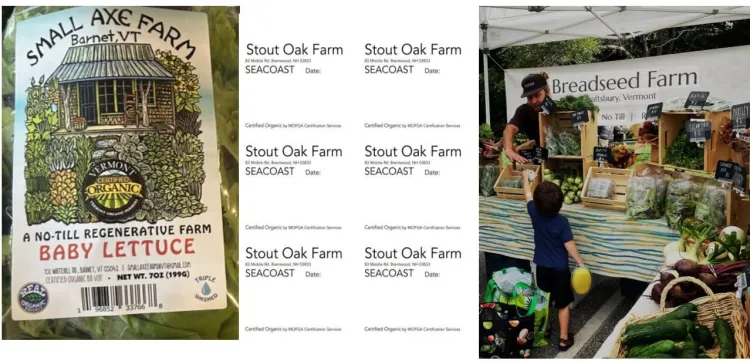
Design Goals
- Labels comply with federal law (the FSMA Produce Safety Rule) by providing your farm name and complete farm contact information.
- Labels are legible, durable, and easily secured to produce containers.
- In retail situations like farm stands or farmers’ markets, a sign or placard can replace labels and provide the same information.
- Labels are consistent and minimize handwriting (pre-printed).
- Labels are waterproof and removable (if containers are cleaned and reused).
- Labeling and packing process is efficient and easy to set up/break down.
- Produce that is typically consumed raw is only packed in new or well-cleaned containers.
- Containers protect and preserve product quality (will not crush, appropriately ventilated).
Design Elements
- Pre-printed labels are prepared in advance of packing and are easily accessible.
- Labels adhere easily and completely to packing containers.
- Packing containers (e.g. bags, boxes) are clean and dry prior to labeling.
- In small wash-pack spaces, a compact, mobile labeling station (e.g. a dedicated cart on wheels) keeps scales, bags, ties, and labels out of the way and ready when needed.
- In more spacious wash-pack spaces, a dedicated workstation has cleanable surfaces, labeling supplies organized and within reach, and is not exposed to splashing during washing.
- A staging surface for packing (e.g. pallet or cart) is next to the labeling workstation to facilitate efficient movement of containers from labeling area to storage or shipment.
- Reusable plastic shipping containers (e.g. flip top, clam shell, bulb crate) have a durable farm contact label (permanent or waterproof sticky back) as well as easily removable/replaceable product ID label (e.g. contents and date). ID labels can be on cardstock in a transparent stick-on sleeve or written on the container using a rub-resistant but washable marker for plastic.
- Cardboard or waxed boxes should not be reused for packing produce that is typically consumed raw because that increases risk of cross-contamination. If boxes are reused for produce not typically consumed raw, a shared cleaning protocol between the grower and buyer is needed to minimize cross-contamination risk. Additionally, growers carefully inspect boxes before use, discarding potentially damaged or contaminated boxes. A single-use liner (solid or perforated) may be used to line re-used boxes before packing to reduce produce contact with the container.
- Containers seal, stack, and are spaced properly to protect product from crushing, drying out, or other damage.
- Containers have a degree of ventilation appropriate to optimizing product shelf-life.
Benefits
- Proper labeling supports compliance with legal requirements and meets customer expectations.
- Proper labeling supports the recall of potentially contaminated products and thus reduces risk to consumers and to your business.
- Dedicated, well-organized packing and labeling stations increase production efficiency, and decrease potential for cross-contamination in a busy wash-pack area.
- Labels that stay on the product avoid unintended loss of source identity.
- Well-branded product labels can increase customer satisfaction and loyalty.
- Appropriate containers reduce food safety risks and protect product quality.
Photos
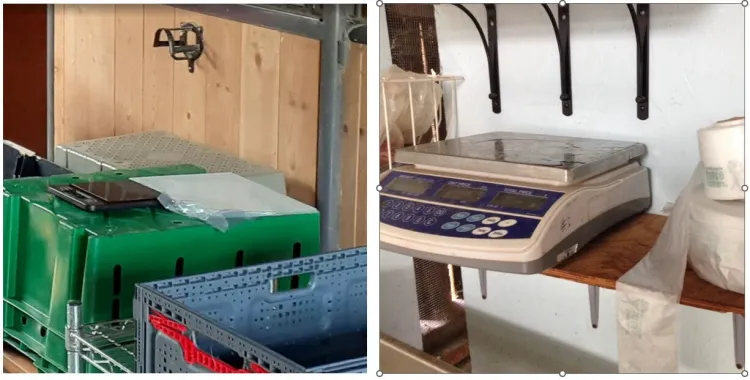
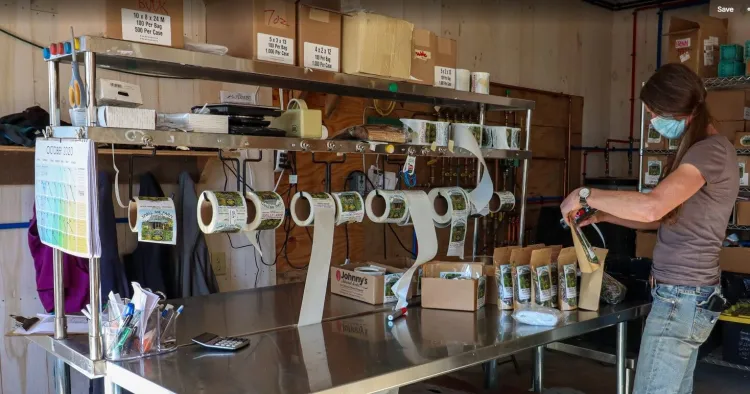
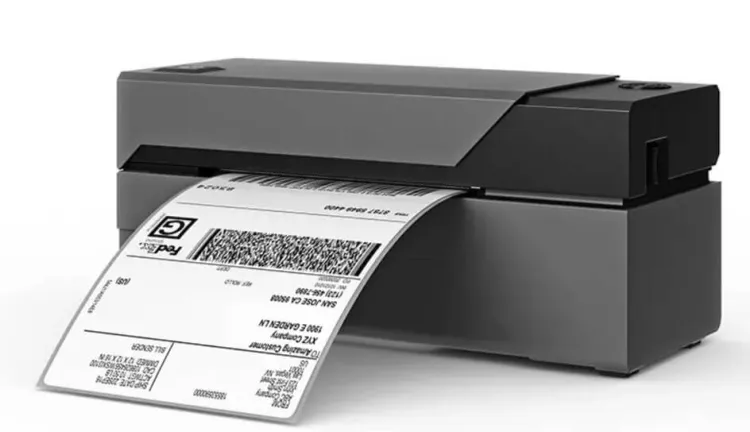
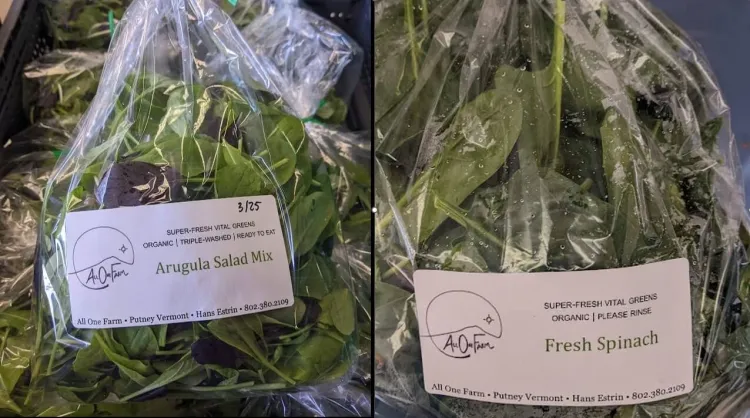
Authors: Hans Estrin and Vern Grubinger, UVM Extension
This work is supported by the Food Safety Outreach Program Name, project award no. 2023-70020-40688, from the U.S. Department of Agriculture’s National Institute of Food and Agriculture. Any opinions, findings, conclusions, or recommendations expressed in this publication are those of the author(s) and should not be construed to represent any official USDA or U.S. Government determination or policy.
